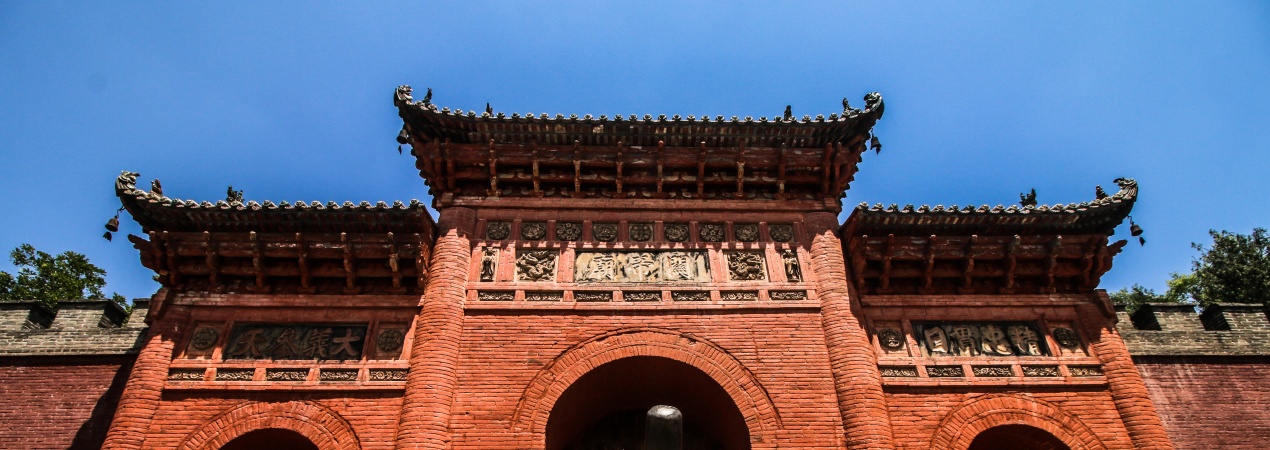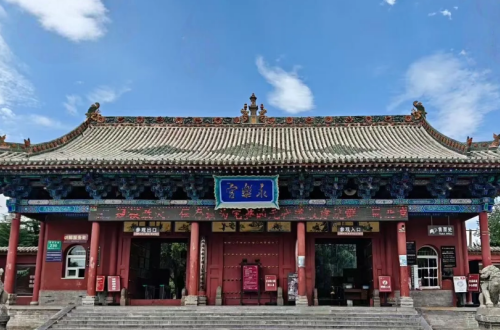Yuncheng Guandi Ancestral Temple

Shanxi, a province steeped in history and cultural heritage, boasts numerous attractions, among which the Guandi Ancestral Temple in Xiezhou, Yuncheng stands out. This significant cultural and religious site draws countless domestic and international visitors annually, offering profound insights into the traditional Chinese virtues of loyalty and righteousness embodied by Guan Yu.
- Chinese name: 关帝祖庙 Guān Dì Zǔ Miào
- Recommended Duration: 1-2 hours
-
Entrance Fee:
RMB 60 for peak season
RMB 50 for off-peak season
-
Opening Hours:
Peak season(April to October) 8:00-18:00
Off - peak seasons (November to March) 9:00-17:00
- Best time to visit : March to May, September to November
- Address: Xiezhou Village, Xiezhou Town, Yanhu District, Yuncheng City, Shanxi Province
- How to get there: Take bus No.3, 7, 18, 17 and get off at Guandi Temple Station
Highlights of Yuncheng Guandi Ancestral Temple
Jieyi Garden
Jieyi Garden was built in 1620 by Zhang Qilong, Magistrate of Xiezhou in the Ming Dynasty. In 1762, Qing Dynasty Magistrate Yan Rusu expanded it and wrote its name. The complex has a fancy wooden memorial archway—the grandest in the temple—a main Oath Pavilion with two old pines, and stone carvings. These carvings show Liu Bei, Guan Yu, and Zhang Fei’s famous peach garden oath, set among pines, bamboos, and flowers.
Four-Dragon Glazed Screen Wall
South of Guandi Ancestral Temple's main gate stands this Ming Dynasty glazed screen wall (1426-1435). It has two uses: architecturally, it blocks views and adds depth to the landscape; culturally, it acts as a feng shui item to keep disasters away and bless worshippers. Its design splits into heaven, earth, and sea vertically, with four coiling dragons and mythical creatures like phoenixes, qilins, and jade rabbits, all carrying deep traditional meanings.
Chongning Hall
As the main hall of Guandi Ancestral Temple, Chongning Hall derives its name from Emperor Huizong of Song bestowing Guan Yu the title "Chongning True Lord." The platform before the hall features a Qing-era bronze incense tripod and sacrificial altar replicating ancient designs. Steps descending from the platform display imperial-style carvings of scroll grass, flowing clouds, and twin dragons playing with a pearl. This seven-bay-wide, six-bay-deep structure boasts a double-eaved hip roof and 26 colossal stone dragon pillars. Ascending and descending dragons coil amidst auspicious clouds, their bold craftsmanship contrasting with the delicately carved pillar-top beams to create complementary aesthetic harmony. As temple inscriptions declare: "Dragon-carved pillars soar beneath magnificent eaves – an architectural splendor unrivaled worldwide."
Educational Value
Guan Yu is especially important to Shanxi people. First officially worshipped in Emperor Huizong’s reign (1119 - 1125 AD) of the Northern Song Dynasty, his status rose from secondary to primary deity in the Ming Dynasty, with ceremonies growing more elaborate. The sacrificial texts at Guandi Ancestral Temple—including eulogies and prayers—helped worshippers communicate with the divine. The earliest surviving texts come from the Ming Dynasty. As state veneration grew, more ritual texts were kept, now acting as key historical records for studying Guan Yu worship traditions.
Activities to do at Guandi Temple
Yuncheng Guan Yu Cultural Festival
Held annually in October (the ninth lunar month) since 1990 in Xiezhou, Yuncheng - Guan Yu's hometown, this internationally renowned event combines tourism, culture, folk traditions, and commerce. As one of China's top ten figure-themed festivals, it features the grand Autumn Sacrifice recreating Ming Dynasty rituals with 14 ceremonial steps. The highest-grade "Tai Lao" offerings (whole ox, pig, and sheep) accompany performances using eight classical instruments (stone chimes, flutes, pipes, xun, sheng, pipa, zither, and drums) playing six Ming-era harmonies. Dances reinterpret Ming's "Civil Virtue" and "Martial Virtue" styles, creating solemn, magnificent ceremonies honoring Guan Yu's enduring legacy.
Guandi Temple Fair
Held at Xiezhou Guandi Ancestral Temple on the 8th day of the 4th lunar month (believed to be Guan Yu's ennoblement day), this event features worship ceremonies, folk performances, market stalls, and martial arts competitions. The "Guan Yu's City Procession" tradition dates back to 1101-1119 AD when Emperor Huizong granted Guan Yu the title "Chongning True Lord." The procession aims to expel evil spirits and bless the community.
During the event, Xiezhou residents full of the streets as a 16-person palanquin carries Guan Yu's statue through main thoroughfares, preceded by gongs, flags, and ceremonial guards. Households line the route with offerings and incense. The annual spectacle attracts tens of thousands of devotees from Fujian, Shandong, Henan, Hong Kong, and Taiwan.
Drop us a line and we'll connect you with the top China expert in no time!
 Eating in Yuncheng
Eating in Yuncheng  Yongle Palace
Yongle Palace  Weather in Yuncheng
Weather in Yuncheng